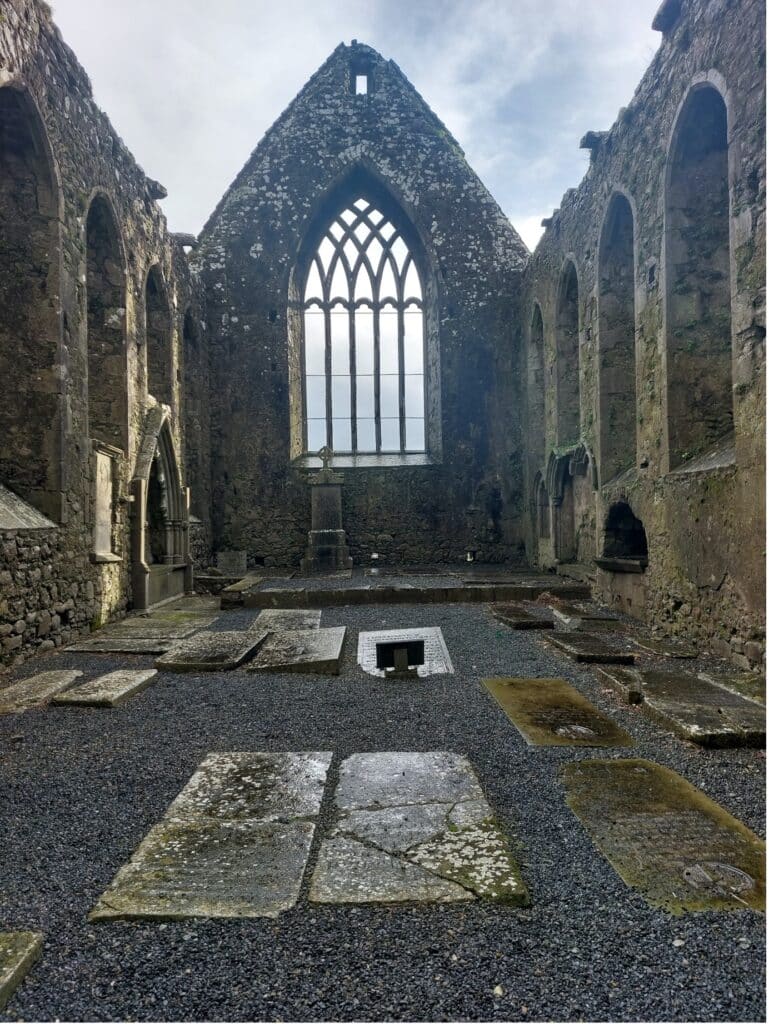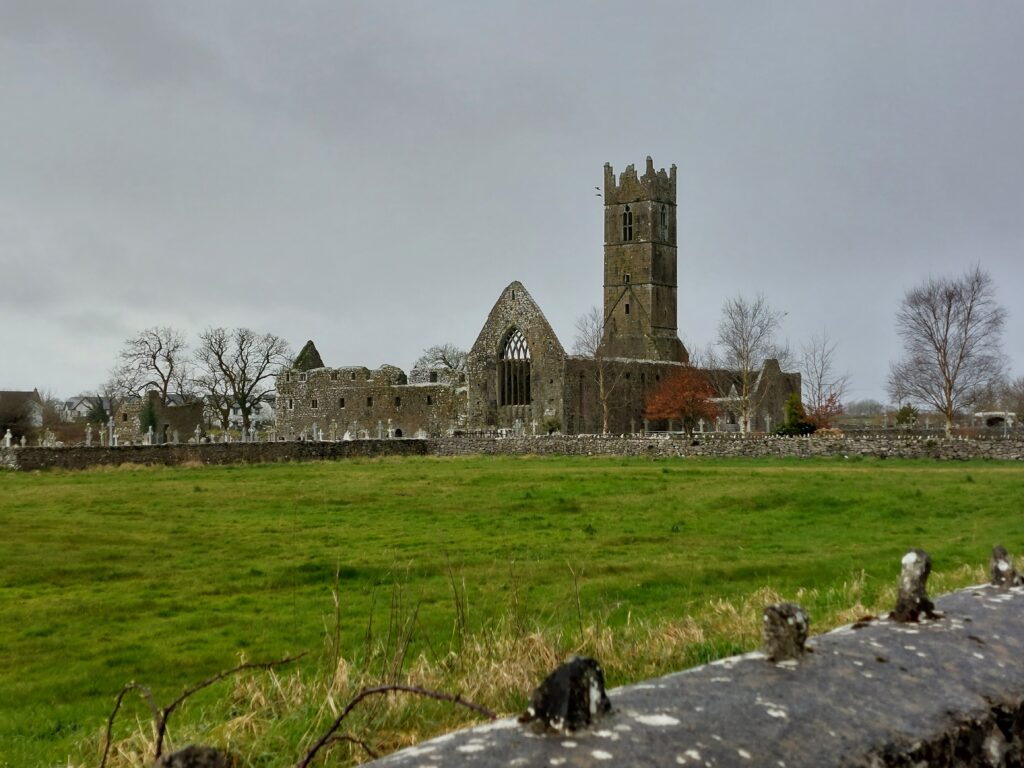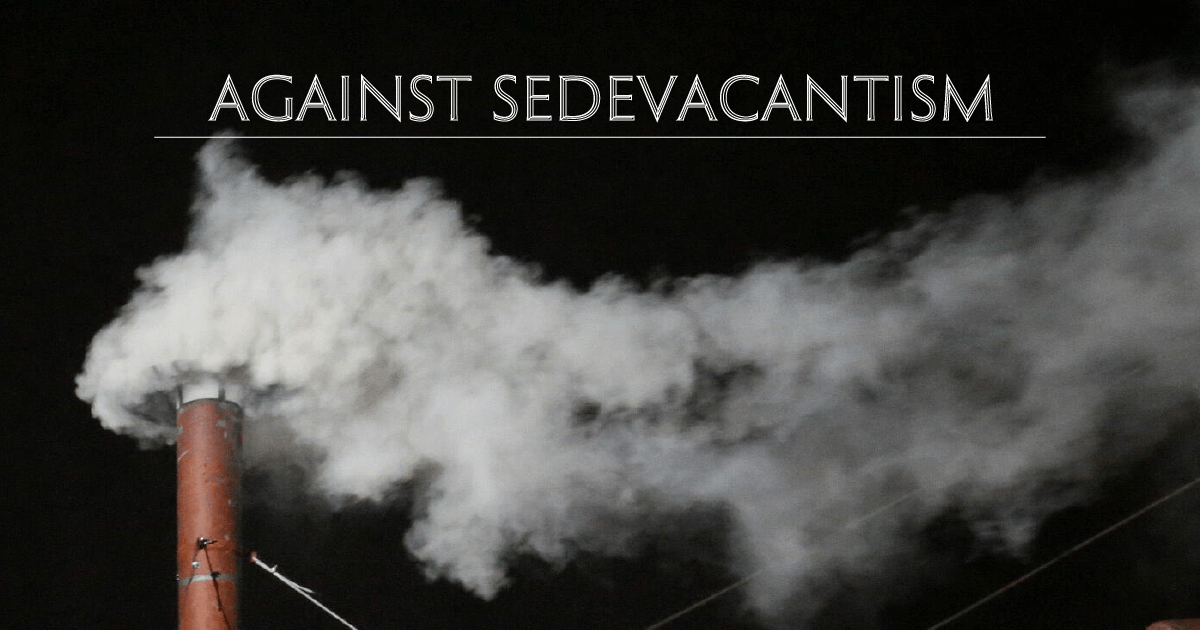Finding hope among the ruins: Rebuilding the Church in Ireland through sincerity
On a cold Spring morning on the west coast of Ireland, replete with intermittent showers of sleet, I travelled to the small town of Claregalway, just outside Galway city. Standing on the outskirts of the town are the impressive ruins of a Franciscan Abbey, whose origins date as far back as 1250 A.D. The story The post Finding hope among the ruins: Rebuilding the Church in Ireland through sincerity appeared first on Catholic Herald.

On a cold Spring morning on the west coast of Ireland, replete with intermittent showers of sleet, I travelled to the small town of Claregalway, just outside Galway city. Standing on the outskirts of the town are the impressive ruins of a Franciscan Abbey, whose origins date as far back as 1250 A.D.
The story behind its building and destruction is typical of the complicated history of Ireland and England. A generation or so after the Anglo-Norman invasion, an Anglo-Norman knight John de Cogan founded the Abbey, later founding a Carthusian Charterhouse elsewhere. De Cogan participated in the armies led by Maurice Fitzmaurice and Richard de Burgh sent to conquer Connacht and defeat the last remaining Gaelic lords.
The Abbey was mostly abandoned to ruin after the dissolution of the monasteries by Henry VIII in the late 1500s. The brutal governor of Connacht, Sir Richard Bingham, incongruously a veteran of the Battle of Lepanto that was so essential for the saving of Christendom, used the Friary as a barracks for troops during the Tudor Conquest of Ireland. With the imposition of the Penal Laws, a series of legal disabilities imposed on Ireland’s Roman Catholic majority, the Friary limped on, being used in some manner or other, until the late 1700s.
As I approach, the scale of the ruins quietly resting beside a busy regional road is impressive. In particular, the well-preserved bell tower and traceried window are eye-striking. After the Abbey was abandoned, it became a site of burial for local people in the 1800s with a graveyard located around and even inside the ruins of the old church and cloister. It is hard to visit the ruins without stepping on graves.
Some gravestones date from the 1820s, while the more recent go up to 1996. As I walk around the ruins, I notice gravediggers getting a new plot ready. (On the bus back to Galway, I would pass a funeral taking place in the modern Catholic Church.) The sound of the gravediggers at work or occasionally the chirping of birds finding sanctuary in the Bell Tower and crevices in the walls of the choir accompany my explorations.

Whenever I visit such ruins, if I’m able, I like to intentionally touch the walls or pillars that most probably were touched by friars and monks during the passage of previous centuries. It is impossible to walk around these types of ruins and not think of the transmission of faith down through the generations, and of the future.
Recently, there was a TV programme on Ireland’s public broadcaster RTÉ lazily titled “The Last Priests of Ireland”. Walking around the ruins and thinking of the number of priests in the country, I think of the line from Ecclesiastes: “Nothing is new under the sun.”
At the height of the Penal Laws, there were very few priests left in the country and yet Catholicism survived, thanks to local communities passing down the Faith and protecting their priests, even to the point of risking death.
Although the current media and establishment are hostile to Catholicism in Ireland, at least it hasn’t yet reached the levels of paid priest-hunters roaming the island, as in previous centuries. We in the West, while recognising the unjust infringements placed on people of faith by our governments, must always have perspective and look to where Christians are being truly martyred in the world.
People have varying ideas for what will save the Church. Some argue for liturgical changes. Others argue for more of the often-misused term of pastoral care. These views often descend into looking at the Church through a political lens and unfortunately too easily create a dividing line. What I believe will again attract young people to the Church in Ireland is sincerity.
The credibility left in the Church in Ireland rests in its work for peace in the North and the many charitable organisations set up and still operating by religious organisations. Liberal Ireland still needs the work of unpaid religious running organisations such as the Capuchin Day Centre for Homeless People that, along with its Brother Kevin, is universally praised. But this is not enough – to be credible to young people the Church must have sincerity.
Ireland will undergo dramatic changes in the coming years with the number of active priests plummeting. However, at the same time, it is highly likely that the priests that will be left will actually be enough to cater for the numbers of practicing believers. What will have to change is the casual, transactional use of the Catholic Church by apostates, agnostics and atheists for the reception of the Sacraments, weddings and funerals.
The attitude for decades in Ireland towards the Sacraments has been, to paraphrase Father Ted, “collect ten crisp packets and become a Catholic”. One of the first things the Church in Ireland must do to restore credibility is to take the teaching of the sacraments out of the schools. In the early Church, baptism and confirmation were markers that you were ready to die for Christ, and your profession to be a believer set you apart from the rest of society. The Sacraments must be treated with greater respect. While there have been some steps taken toward this already, and in some cases they are being taught well, in a lot of schools it is young, atheist or agnostic teachers that are “teaching” the Catholic faith to children.
Coupled with this is the divestment of most Catholic schools to the State. Sooner or later, when Sinn Féin takes power in Ireland there is likely to be a renewed attempt to redraw the unseen border between Church and State. It is now ten years on from when the atheist Minister for Education Ruairí Quinn failed in an attempt to divest schools of Catholic patronage, a move actually supported by the Church Hierarchy, after the objections of parents.
But now, after further scandals and society having shifted in a more liberal direction, it is likely that more schools would get divested this time around. And that may actually be for the best. Already, a significant proportion of these schools are Catholic in name only. The Church hierarchy must enter into this even more enthusiastically than it did ten years ago. The divestment of Catholic schools – enabling those that actually are truly Catholic to remain Catholic and to be well-resourced and employ teachers who are practising Catholics – and how the teaching of the sacraments is managed won’t on their own save the Church in Ireland. But they are two of the most obvious starting points, on a long, if not endless, list of what might save the Church.
Sincerity extends to Church teaching. When campaigning to keep the 8th Amendment relating to abortion, I remember feeling abandoned by the Church with the sole exception of Bishop Kevin Doran, who spoke out as Chair of the Bishops’ Life and Ethics Committee. Although the Church may have made a tactical decision about not being seen to wade in on the issue, hoping to achieve a better result if the bishops stayed out of it, might it not have been better – certainly given the way the result went – to go out swinging?
This also extends to the often abused term of being “pastoral”. When Pope Francis hugged the severely disfigured man in 2013, it touched the world and is the most powerful example of the Pope’s passion for pastoral authenticity. This pastoral authenticity must also extend to telling people, with pastoral gentleness but stemming from Christian concern for their brother or sister in Christ, what they don’t want to hear: that their sin is separating them from the Lord.
Then there is sincerity in liturgy. Reverence is central in the liturgy and cultivating a space for silence is desperately needed, especially for young people whose lives are filled with constant noise. I am willing to excuse almost anything if I can detect sincerity; for example, that when the priest is elevating the Eucharist he believes it is the Real Presence.
At the same time, still not enough has been done for victims of clerical abuse in Ireland. While great strides have been made, and no amount of money spent can ever repair people’s broken lives, one worldwide annual day of prayer is not enough.
Everything mentioned so far has centred on the clergy, but this sincerity must extend to the laity in equal measure. It will take real, active communities to pass on the faith and for it to thrive. Young people now and in years to come must volunteer in the parishes if we want those parishes to continue to exist. Social media won’t get you to heaven. Our faith must mean more than just turning up on Sunday, and it can’t depend on the next Conclave or appointment of a Bishop.
Although I didn’t want to – and my worst fears were realised – when the Holy Father asked for Catholics to take part in the Synod, I took part twice in the meetings in Ireland. There was a kaleidoscope of opinions offered. The complete lack of catechetical instruction to the laity was on full display. However, all the young people present at the meetings wanted the traditional teachings of the Catholic Church taught clearly. Some wanted greater emphasis on reverence in the liturgy or on evangelisation.
At the same time, I sat at meetings where a different generation argued for changes to Church teaching on sexuality and women priests as the sought-after panaceas demanded. At the meetings, young people were outnumbered usually and a lot of my friends either refused to take part due to their fears about the Synod or were too busy – often being so busy trying to keep the Church afloat to bother talking about it. Whether the older generations are busy or not, responsibility will fall to young people to take part and volunteer in their parishes. Through being part of living, active communities the Church will grow, and young people, families, as well as the priests involved, will be supported. It is too easy to complain: it takes effort to form and live in communities.
The Church in Ireland and its hierarchy will be forced to make important decisions very soon concerning schools, instruction of sacraments, the vocations crisis, amalgamating parishes and closing churches. One can only hope that they will be courageous enough to be unpopular and take the decisive actions that will set up the Church here to be on a mission to re-Christianise Ireland in the decades to come. I don’t envy the bishops, and people should be charitable to them as they are faced with questions that have no easy answers. However, some decisions have been put off for decades; sticking our heads in the sand and waiting for the inevitable is no longer an option. Sincerity is the only starting point from where the church can go.

I think of the society and culture that has abandoned Christ and religion. We busy ourselves with what is immediate and not with what is important. I recently came across a line from W.B. Yeats’ “The Second Coming”, in which he said: “The falcon cannot hear the falconer.” Too many people in Irish society cannot hear God anymore.
Yet as I walked around those ruins, I found hope: that all this has happened before. We will all get through this: it is our cross to live in confusing times. Stepping over the graves from across the centuries, I’m again reminded of how, even after the Franciscans left, the faith was passed down through the generations, at times of risking death, through small communities.
It is only through small communities living the faith, and struggling together, that the Church in Ireland will survive. After all the ugly, soulless modern buildings that we spend billions on have decayed, and the modern recycled heresies have disappeared into the ether, the buildings of our ancestors in the faith will remain solid and true.
The Franciscan Friary in Claregalway will still stand for centuries to come.
Photo: The Franciscan Friary in Claregalway. (Photo by author.)
![]()
The post Finding hope among the ruins: Rebuilding the Church in Ireland through sincerity appeared first on Catholic Herald.














